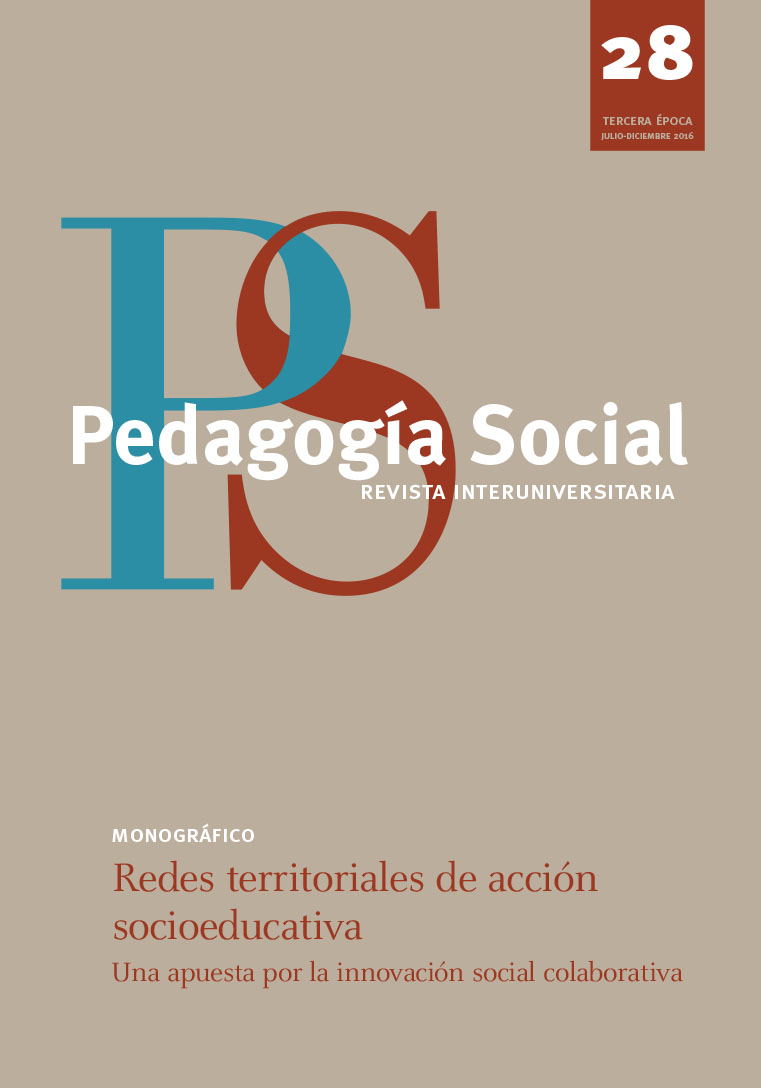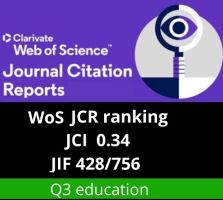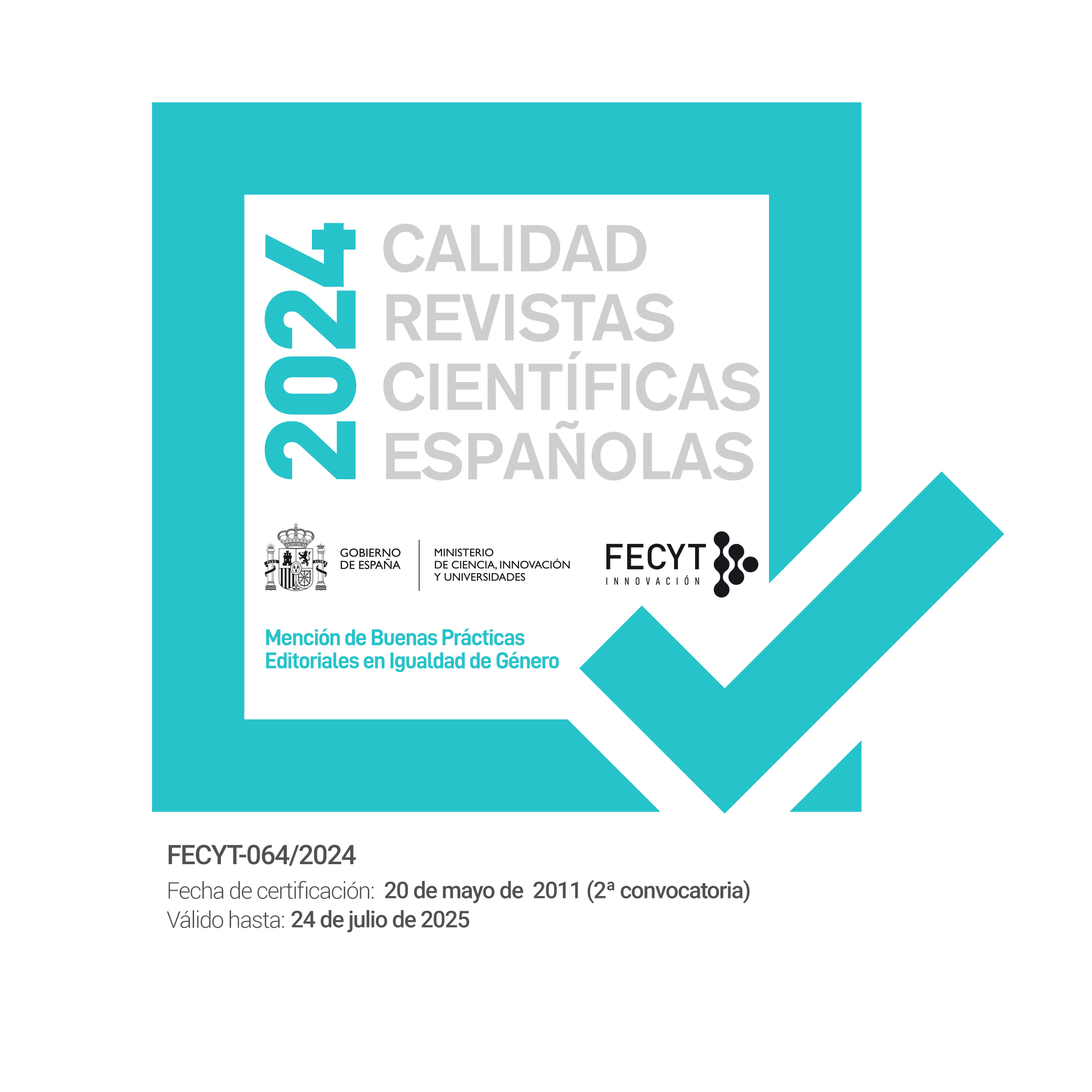Decisión, riesgo e incertidumbre. ¿Retirada o reunificación de los niños y jóvenes en peligro?
DOI:
https://doi.org/10.7179/PSRI_2016.28.16Palabras clave:
servicios sociales, abuso infantil, evaluación de riesgos, toma de decisiones, acogimiento familiarResumen
Este estudio tiene como objetivo comprender mejor lo que influye y determina las decisiones en entornos caracterizados por la complejidad y la incertidumbre, y contribuir a la elaboración de recomendaciones para la práctica. Basado en el trabajo de Davidson-Arad y Benbenishty (2008, 2010), se pretendía saber cómo los estudiantes de nivel universitario, en áreas científicas relacionadas con las profesiones involucradas en la toma de decisiones sobre los proyectos de vida de niños y jóvenes en situación de riesgo, tomarían decisiones ante un caso concreto, en diferentes escenarios. En el estudio participaron 200 estudiantes universitarios de diferentes regiones de Portugal. Se utilizó para ello un diseño factorial, lo que implicaba una viñeta cuestionario con cuatro versiones, que describe el caso de un niño con sospecha de ser una víctima de violencia, y en el que se evalúa que decisión debe tomarse en el momento y, en el caso de que sea retirado de su familia biológica, si debe o no reunirse dos años después de esa decisión. Entre los principales resultados destacan que los estudiantes reconocen el riesgo de que el niño esté sufriendo un daño físico y emocional significativo. Su decisión mayoritaria fue a favor de una intervención con la familia biológica, evitando la retirada del menor de su contexto de vida. Sin embargo, ante una decisión que favorece acogimiento familiar, cosideraban, al evaluar el caso después de dos años, también en su mayoría, que el niño debe permanecer con la familia de acogida. Es de señalar, con significación estadística, que la decisión fue influida, al principio, por el acuerdo o no de la madre con la retirada, y la segunda vez por el deseo o no de la reunificación del niño con su familia biológica. Se concluye que el desarrollo de criterios de evaluación profesional y la toma de decisiones, implica la integración en el currículo de la educación superior en el área de protección de la infancia, del estudio de los criterios para la retirada, de las condiciones para la reunificación y las ventajas de la participación el niño y la familia biológica en la intervención.
Descargas
Citas
Baumann, D.J., Dalgleish, l., Fluke, J., & Kern, H. (2011). The decision-making ecology. Washington, DC: American Humane Association.
Baumann, D., Kern, H., & Fluke, J. (1997). Foundations of the decision making ecology and overview. In H., Kern, D.J., Baumann, & J. Fluke, (Eds.), Worker Improvements to the Decision and Outcome Model (WISDOM): The child welfare decision enhancement project (pp. 15-31). Washington, D.C.: The Children’s Bureau.
Benbenishty, R., Davidson-Arad, B., lópez, M., Devaney, J., Hayes, D., Spratt, T., et al. (2014). Decision making in Child Protection: An International Comparative study on maltreatment substantiation, Risk Assessment and Interventions Recommendations, and the Role of Professionals’ Child Welfare Attitudes (Oral Presentation). EUsARF 2014, Copenhaga, Dinamarca.
Benbenishty, R., Osmo, R., & Gold, N. (2003). Rationales Provided for Risk Assessments and for Recommended Interventions in Child Protection: A Comparison between Canadian and Israeli Profissionals. British Journal of Social Work, 33, 137-155. DOI:10.1093/bjsw/33.2.137
Casas, F. (2010). Representaciones sociales que influyen en las politicas sociales de infancia y adolescencia en Europa. Pedagogía Social. Revista Interuniversitaria, 17(1), 15-28. DOI: 10.7179/psri_2010.17.02
Dalgleish, l. (1988). Decision-making in child abuse cases: Applications of social judgment theory and signal detection theory. In B. Brehmer & C.R.B. Joyce (Eds.), Human Judgment: The SJT view (pp. 71-95). North Holland: Elsevier.
Davidson-Arad, B., & Benbenishty, R. (2008). The role of workers’ attitudes and parent and child wishes in child protection workers’ assessments and recommendations regarding removal and reunification. Children and Youth Services Review, 30(1), 107-121. DOI: 10.1016/j.childyouth.2007.07.003
Davidson-Arad, B., & Benbenishty, R. (2010). Contribution of child protection workers attitudes to their risk assessments and intervention recommendations: a study in Israel. Health and Social Care in the Community, 18(1), 1-9. DOI: 10.1111/j.1365-2524.2009.00868.x
Delgado, P., Carvalho, J.M.S., & Pinto, V. S. (2014). Crescer em família: a permanência no Acolhimento Familiar. Pedagogía Social. Revista Interuniversitaria, 23(1), 123-150. DOI: 10.7179/psri_2014.23.06
Fluke, J. D., Chabot, M., Fallon, B., Maclaurin, B., & Blackstock, C. (2010). Placement decisions and disparities among aboriginal groups: An application of the decision-making ecology through multi-level analysis. Child Abuse and Neglect, 34, 57-69. DOI: 10.1016/j.chiabu.2009.08.009
Gambrill, E. (2008). Decision making in Child Welfare: constraints and potentials. In D. lindsey & A. shlonsky, Child Welfare Research (pp. 175-193). New York: Oxford University Press. DOI: 10.1093/acprof:oso/9780195304961.003.0010
Gilbert, N., Parton, N., & skivenes, m. (2011). Child Proctetion Systems. New York: Oxford University Press.
Gold, N., Benbenishty, R., & Osmo, R. (2001). A comparative study of risk assessments and recommended interventions in Canada and Israel. Child Abuse & Neglect, 25, 607-622. DOI: 10.1016/s0145-2134(01)00228-9
Hardman, D. (2009). Judgment and decision making. Psychological perspectives. Chichester: BPs Blackwell.
Horwath, J. (2006). The missing assessment domain: Personal, professional and organizational factors influencing professional judgments when identifying and referring child neglect. British Journal of Social Work, 37(8), 1285-1303. DOI: 10.1093/bjsw/bcl029
Instituto da segurança social (2014). Casa 2013. Relatório de caracterização anual da situação de acolhimento das crianças e jovens. lisboa: Instituto da segurança social.
lindsey, D., & Shlonsky, A. (2008). Closing reflections: future research directions and a new paradigm. In D. lindsey & A. shlonsky, Child Welfare Research (pp. 375-378). New York: Oxford University Press. DOI: 10.1093/acprof:oso/9780195304961.003.0023
Munro, E. (2008a). Effective child protection. london: sage. DOI: 10.1093/bjsw/bcp069
Munro, E. (2008b). lessons from research on Decision making. In D. lindsey & A. shlonsky, Child Welfare Research (pp. 194-200). New York: Oxford University Press. DOI: 10.1093/acprof:oso/9780195304961.003.0011
Regehr, C., Bogo, M., Shlonsky, A., & leBlanc, V. (2010). Confidence and professional judgment in assessing children’s risk of abuse. Research on social work practice, 20(6), 621-628. DOI: 10.1177/1049731510368050
Taylor, B. J. (2005). Factorial surveys: Using vignettes to study professional judgment. British Journal of Social Work, 36, 1187−1207. DOI: 10.1093/bjsw/bch345
Taylor, B. J. (2013). Professional decision making and risk in social work. london: sage.
Archivos adicionales
- Sin título (Português (Portugal))
- Sin título (Português (Portugal))
- adminRECYT, Decisão, risco e incerteza II.docx (Português (Portugal))
- Tablas (Português (Portugal))
- DECISIÓN, RIESGO E INCERTIDUMBRE Retirada o reunificación de los niños y jóvenes en peligro? (Português (Portugal))
- INFORME DE REVISIÓN 1326 V4 (Português (Portugal))
- Artículo - Tablas revistas (Português (Portugal))
- Tablas Corregidas (Português (Portugal))
- adminRECYT, CV Paulo Delgado.docx (Português (Portugal))
- Trad (Português (Portugal))
- Sin título (Português (Portugal))
- Artículo definitivo (Português (Portugal))
- Sin título (Português (Portugal))
Publicado
Cómo citar
Número
Sección
Licencia
Derechos de autor 2016 Pedagogía social. Revista interuniversitaria

Esta obra está bajo una licencia Creative Commons Reconocimiento-NoComercial 3.0 Unported.
Derechos de reproducción y archivo
La versión publicada de los artículos podrá ser autoarchivada por sus autores en repositorios institucionales y temáticos de acceso abierto. No obstante la reutilización total o parcial de los mismos en nuevos trabajos o publicaciones deberá ser autorizada por Pedagogía Social. Revista Interuniversitaria.
Los trabajos publicados deberán ser citados incluyendo el título de la Revista, Pedagogía Social. Revista Interuniversitaria, nº, páginas y año de publicación.
Responsabilidades éticas
Pedagogía Social. Revista Interuniversitaria no acepta material publicado anteriormente en otros documentos. Los/as autores/as son responsables de obtener los permisos oportunos para reproducir parcialmente material de otras publicaciones y citar correctamente su procedencia. Estos permisos deben solicitarse tanto al autor/a como a la editorial que ha publicado dicho material.
Es obligación de Pedagogía Social. Revista Interuniversitaria detectar y denunciar prácticas fraudulentas.
En la lista de autores/as firmantes deben figurar únicamente aquellas personas que han contribuido intelectualmente al desarrollo del trabajo.
La revista espera que los/as autores/as declaren cualquier asociación comercial que pueda suponer un conflicto de intereses en conexión con el artículo remitido.
Los autores deben mencionar en el manuscrito, preferentemente en el apartado del método, que los procedimientos utilizados en los muestreos y controles han sido realizados tras la obtención de consentimiento informado.
La revista no utilizará ninguno de los trabajos recibidos con otro fin que no sea el de los objetivos descritos en estas normas.
Aviso de derechos de autor/a
© Pedagogía Social. Revista Interuniversitaria. Los originales publicados en las ediciones impresa y electrónica de esta Revista son propiedad del Pedagogía Social. Revista Interuniversitaria, siendo necesario citar la procedencia en cualquier reproducción parcial o total.
Salvo indicación contraria, todos los contenidos de la edición electrónica se distribuyen bajo una licencia de uso y distribución “Creative Commons Reconocimiento-No Comercial 3.0 España” (CC-by-nc). Puede consultar desde aquí la versión informativa y el texto legal de la licencia. Esta circunstancia ha de hacerse constar expresamente de esta forma cuando sea necesario.






